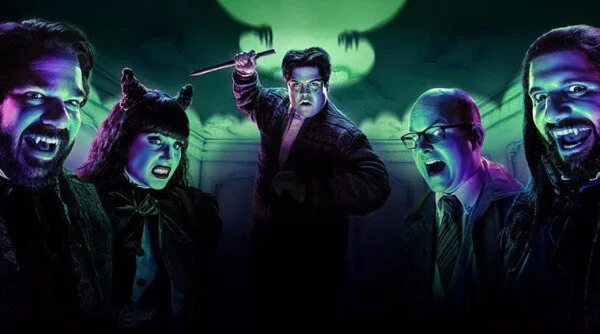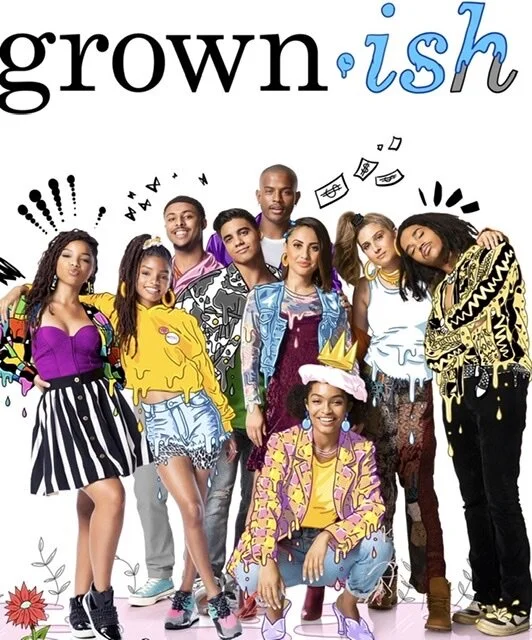I Am Not Wearing Your Letterman Jacket
In these months of solitude, the bored masses have switched on to Netflix to help them escape the mundane feeling of the lockdown. This constant tuning in is no new feeling to teenagers, whose viewership has created an entirely new genre of melodramatic “teen” shows and movies. While I binged (and rebinged) these shows, I became increasingly interested in the patterns of dress. As a fashion zealot, I tend to fixate on styling within any form of media - I get excited by fresh perspectives in fashion. Especially when it is portrayed through a young character’s style. Sadly,
In these months of solitude, the bored masses have switched on to Netflix to help them escape the mundane feeling of the lockdown. This constant tuning in is no new feeling to teenagers, whose viewership has created an entirely new genre of melodramatic “teen” shows and movies. While I binged (and rebinged) these shows, I became increasingly interested in the patterns of dress. As a fashion zealot, I tend to fixate on styling within any form of media - I get excited by fresh perspectives in fashion. Especially when it is portrayed through a young character’s style. Sadly, as I binge hop from Riverdale to Love Victor, I am underwhelmed by the lack of originality in the costume designer’s styling choices. It leaves me to question if there is a dress code for every mainstream teen-oriented TV show and if this rulebook accurately depicts the taste of the current generation.
Throughout these teen melodramas, one-dimensional characters are condemned to insipid styling. Costume designers should use their fashion expertise to amplify the characters’ voices, creating dimension to these teens through clothing but many designers fall flat. However, the issues with costumes is not entirely the costume department’s fault. Hollywood costume designers have to answer to showrunners and the network to ensure that each garment they choose is on brand for the series and the channel.
The aesthetic issues of a show fall on the shoulder of its creator and writing team; the vigor in which they describe each character paints the picture of who the character is, therefore hinting at these character’s style. This causes a hindrance in the creativity for a designer making it hard for them to push boundaries, delivering stimulating costume concepts that their bosses can approve. Here lies the real root of the problem, aside from the basic network TV character breakdowns, a designer’s creativity is dwindled based on what network heads think their audience wants to see. Yet heads of networks (like seventy year old Mark Pedowitz from The CW) are typically the jobs of older white males who have not been in high school since the sixties. So, what do they really know about what our generation likes to wear?
Consider their most popular show, Riverdale. This hit teen drama centers around five main characters that exemplify every single high school movie character trope ever. The All-American jock (who is ironically played by the New Zealand actor KJ Apa), the girl-next-door (Lili Reinhart), the bad boy from the wrong side of the tracks (Cole Sprouse), the rich daddy's girl (Camilla Mendes) and the mean popular head cheerleader (Madelaine Petsch). The Riverdale cast is dressed in tropes: the staple “bad boy” leather jacket is paired with all of Sprouse’s outfits, while rich girl Mendes always adorns her fit with a pearl necklace and Apa constantly sports his football letterman jacket.
Although some of these costume pieces do hold weight for some characters (like Mendes’ pearl necklace was a gift from her father before he went to prison), numerous costume choices simply promote these outdated tropes. Every week we tune in to watch Petsch, the prettiest popular (twenty-six year old) high-school girl, do a slow-motion strut down the halls in her mini-skirt, crop top and heels. She evokes the sense that, “Every girl wants to be her and every guy wants to do her” (F*&% the Prom- another teen flick starring Madelaine Petsch as the mean popular head cheerleader). It is baffling to watch the different shows replicate these tropes (sometimes with the same actor) with the costume design only emphasizing these stereotypes, confirming how superficial screenwriters think teenagers are.
Generation Z is a lot more than the silly high school tropes that are portrayed on TV and we show it by how we dress. We play and experiment with gender norms, always pushing the boundaries of fashion, asking the fashion industry to give us more: more inclusive sizes, more dynamic silhouettes, more comfortable clothing. Most shows don’t represent the dynamic tastes for this generation but, recently one show redefined the style of teen melodramas. HBO’s Euphoria pushes the boundaries of young adult fashion. The show’s characters and costumes embody everything Gen Z is: fun, bold, unique and unapologetic. Euphoria’s make-up artist Doniella Davy was informed and inspired by teen influencers who she researched for the show. Davy wanted to immerse herself in a younger generation’s fashion choices so that she can authentically create looks for young characters, paying off in her first Emmy for Outstanding Contemporary Make-up. This show loves to rebel against the norms of teen show costume design - throughout the series, a transgender character wears non-gender conforming undergarments. “There is a lot of power seeing a young trans girl not really trying to conform to a cis-gender standard” Hunter Schafer (Euphoria actress) stated regarding her character’s costumes. This series recognizes young adults and how we use clothing to express all aspects of ourself.
As Shakespeare’s once said, “Theatre holds a mirror up to society” (Hamlet); although, film is not exactly the same as theatre, it is a mass form of storytelling. People stare at these screens hoping to escape while wanting to find themselves. From the character development to the fashion styling, the lack of genuine adolescent depictions can be disheartening causing one to believe that their story doesn’t matter. As an impressionable teenager, when you watch a show that is supposedly made for you, you should be able to connect to real characters rather than clichés. Hopefully, with Euphoria unveiling what it looks like to be a teenager in today’s society (and receiving accolades for their honest work) there will be a paradigm shift in major studios; causing them to create characters that resemble this generation versus propelling old-fashioned Hollywood ideals.
Photo Credits: Pinterest
Report: Taylor McKenzie
"What We Do in the Shadows" Season Finale Ends With a Big Question, But There Are Plenty of Laughs Along the Way
"What We Do in the Shadows" season two finale has the usual laughs, along with an ending that will have ramifications for the next season
One of the newest and under the radar comedies just wrapped up its second season, and there’s every reason to believe “What We Do in the Shadows” will keep entertaining viewers for years to come. The show is based off a 2014 German film of the same name, and while the characters are different the show carries on the spirit of the film by being a mockumentary about vampires who live together.
The cast of “What We Do in the Shadows” consists of lesser-known actors, most from England, who have never had a more prominent role. The most noteworthy of the bunch is Mark Proksch, who previously had recurring roles on “The Office” and “Better Call Saul.” Proksch plays Colin Robinson, an “energy vampire”, on the show; a socially awkward, almost-human creature who drains humans of their energy whenever they are in uncomfortable situations. Colin Robinson is often the one putting humans in uncomfortable situations, and as a result he usually gets the best lines in the show.
But the season finale revolves around Guillermo De la Cruz, played by Harvey Guillén. Guillermo is a familiar, a human being who assists a vampire in the hopes of one day becoming a vampire themselves, and is constantly treated poorly by the vampires he lives with. As the second season progressed we began to see Guillermo get more and more fed up with the way he was being treated, and we also learn about his previously undiscovered abilities as a vampire hunter.
By the beginning of the season two finale Guillermo has abandoned his duties as a familiar to go live with his mother. Meanwhile the vampires receive an invitation to an incredibly prestigious vampire event called Nouveau Théâtre des Vampires, although they are unaware of the fact that the invitation was sent by the Vampire Council as a trap to execute the vampires for past misdeeds. Luckily Guillermo stops by the vampire residence and sees the invitation, recognizing immediately that it is a trap. He makes his way to the event and intervenes just in time to save the vampire crew, although in doing so he had to slay dozens of vampires and reveal his true skills as a vampire hunter. Although we are not given a lot of time to see how the vampires process this new revelation, the episode ends on a very funny note that demonstrates they may be rather indifferent about it.
How the new revelation is addressed by the vampires and changes Guillermo’s role in the group will be the biggest question heading into the next season. FX announced on May 22 that the series will be renewed for a third season, although it likely will face delays due to the coronavirus pandemic. In the meantime, the first and second seasons of “What We Do In The Shadows” are available for Hulu, YouTube TV and Sling TV subscribers.
Photos courtesy of The Indian Express and Consequence of Sound
Report: Michael Rosen
Grown-ish Return Delayed Until 2021
The Covid-19 pandemic has caused chaos in the entertainment industry, resulting in delays for many TV and film productions. American sitcom Grown-ish has fell into this havoc, resulting in a later return.
Grown-ish an American sitcom series that follows after ABC’s Black-ish, is about a girl named Zoey Johnson who enters a new phase in her life: college. Zoey quickly realizes that she is becoming an adult and without the help of her family, she must navigate college life through new friends, love interests, finances, politics, even down to her college courses.
Grown-ish has 3 seasons and was expected to return this summer, but in a recent twitter post it is clear that plans changed.
A tweet was posted from the Grown-ish Twitter page saying, “hey #grown-ish fam, while we had planned to be back this summer, we are now coming back with new episodes in 2021. we know that’s a bummer, it is for us too, but we will be back stronger and grown-er than ever in 2021. lets pretend that 2020 never happened.”
Twitter wasn’t the only one to make this announcement, Yara Shahidi the shows lead actor took to instagram saying:
“GROWNISH IS MOVING. We had planned to be back this summer, but we are NOW coming back with ALL NEW EPISODES in 2021” (that’s right around the corner…right?)
While this can be devastating news for viewers that were desperately waiting for the shows return… there’s always binge watching each season for the mean time. Grownish is available on Freeform and Hulu.. in case you want a head start.
First picture: imdb.com
Second picture: tvseasonspoilers.com
Third picture: pinterest.com
Report: Juana Norales

































At the rise of Covid-19 many of us first questioned the timeline of fashion week and would we see the regular calendar continue - the question weighed over many of us for months! It was refreshing to see design houses and designers across the globe take advantage of the uncertainty and plow into production mode - thus my interest in Jerri Reid New York - The Black Designer based in Brooklyn New York wow’d instagram with his latest collection paying homage to the Black Is King film which debuted earlier this year in July. I was taken aback at quick of a turn round the young designer produced and released his well crafted designs reflecting some of the films most memorable moments.